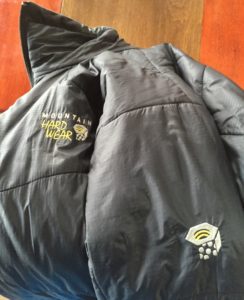Are you maximizing your brand’s storytelling potential? From outdoor gear manufacturers to B2B software providers, brands in every sector have a compelling story to tell and share with the news media, on social media and with customers. Be it the company creation story or an amazing customer testimonial, those stories need to be mined and honed, and publicized. The problem is, most brands fail at exploiting these stories.
Mining involves paying attention to the brand’s customer feedback. There is potential gold lying in customer service servers around the world. Let me give you and example. Recently, I found myself in a dicey situation the morning after Christmas. A huge Madrona tree had parked itself during a king tide right between my dock and my neighbors, and right if front of our bulkhead. It had a massive root, part of which was buried in the sand.
Despite all best efforts, we ended up in the water during another king tide, in the dark, trying to move this thing, which we did after about 15 minutes of pushing. It was 30 degrees outside and 45 degrees in the water. I don’t know which was worse. I had gone in the water wearing some knee high boots, my pajama pants and a Mountain Hardware down jacket. Upon exiting the Sound I ditched all of my clothes on the porch in a race for a warm shower. I had left that jacket for dead.
There is no way it should survive the salt water, much less being frozen to the porch for two days. But at some point my wife took pity on it and dried it out. Two days later, I wore it while on a hike around a frozen pond. It was fine. In fact it was more than fine. From a consumer standpoint I was thoroughly sold, not just because it endured such a tremendous beating and survived, but also because I think it kept me warm in the water. I’ve never spent that much time submerged to my chest in the Sound, even on the hottest days of summer.
I’ve heard that trying to mine that type of story with a B2B software company, for example, is much more difficult, but I would disagree. If your team can’t find a killer customer story, then start by analyzing your client’s creation story. Certainly that company created its product in order to solve some problem the founders see in the status quo? Perhaps one or more of those founders had some sort of cool epiphany that sparked the initial product idea? Or, has an experience story to tell that answer that universal question of, why?
One of the most interesting creation stories I’ve heard over the years involves a current client that falls into the B2B software category. This company’s software platform collects and integrates data with electronic health records in an effort to streamline drug approval processes within clinical trials. Two of the company’s three founders came from the Genentech’s Herceptin program; Herceptin was the first biologic approved for the treatment of metastatic breast cancer.
One of those co-founders served as the clinical project manager for the Herceptin program, starting in 1994 and continuing all the way through Herceptin’s ultimate approval in September 1998.
The story of Herceptin’s development was so dramatic it was made into a TV movie called ‘Living Proof’ that was released in 1998 on the USA Network, and starred Harry Connick, Jr., as Dr. Dennis Slamon, the UCLA physician who had so much faith in Herceptin as a treatment for breast cancer that he risked his career to prove it.
Is that story more or less powerful than a classic consumer company creation story, such as that of Clif Bar & Co? For the unaware, Clif Bar’s founder Gary Erickson was a competitive cyclist who, during a 175-mile training ride in the early 1990’s became so sick of eating Powerbars that he went straight home to his mom’s kitchen and created the Clif Bar. Many years later the entire company participates in that same 175-mile ride, which is called the Epiphany Ride. For the lazy, here’s a video explaining it all:
Clif Bar has parlayed its creation story to the max and continues to tell it as if it is fresh – it is the very reason for its existence. B2B companies should follow suit.
But, B2B players might argue that gaining customer stories is much easier on the consumer side. For example, a company like Mountain Hardware can simply take the email I sent after my experience and use it to engage me on whatever level it chooses, which it smartly did. On the B2B side all hope is not lost. There are in some cases, amazing customer stories to tell, but those stories have to come from the sales side of the house in the form of a classic case study.
Boring, you say? I disagree. Case studies today are more powerful than ever. If you have a bit of budget to spend, engage a trusted vendor and create a video case study. That video then becomes not only a sales tool, but also a killer piece of content for social media purposes and a talking point at trade shows. Pro tip: spend a few extra dollars to create two versions – one that is heavily branded and one that is minimally branded. Then simply use the proper version for the demands of the occasion. If all works as planned that video should pay itself off in spades before long.
Your brand is not a brand and therefore won’t develop brand ambassadors if you don’t have a killer creation story, or cool customer stories to share with the world. Now is the time to start mining. Here’s a great read to get you started.


